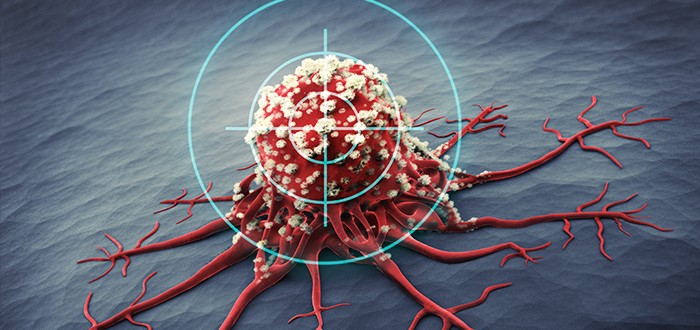Two anti-angiogenic agents are better than one when it comes to disrupting mesothelioma tumor growth and slowing down the cancer’s progress.
Researchers from Hyogo College of Medicine in Japan revealed last month that using multiple anti-angiogenic factors as gene therapy agents increases effectiveness against mesothelioma because this approach permits an attack on more than one endothelial growth-signaling pathway at a time.
An anti-angiogenic factor is a substance that inhibits angiogenesis. Angiogenesis is the process by which a mesothelioma cell develops new blood vessels.
The addition of those vessels allows the mesothelioma cell to consume ever greater amounts of food, which allows it to grow, multiply and spread.
Slowing angiogenesis involves exposing the mesothelioma cell to one or more anti-angiogenic factors. Once the exposure occurs, the factors bind to specific receptors on the surface of the mesothelioma cell.
After binding occurs, the angiogenesis process will be derailed. Not completely, but derailed enough to perhaps make a difference.
If two factors are utilized rather than one, the difference made can be all the bigger, the researchers suggest.
Anti-Angiogenic Factors Tested on Mesothelioma
The scientific community has seldom considered anti-angiogenic factors as a focus for testing against mesothelioma. They have for other cancers, but not so much for mesothelioma.
With this latest research, the goal was to see how well each of the tested factors could inhibit the growth and spread of mesothelioma cells of the endothelial type. The researchers shared their observations in the Oncology Reports.
The researchers worked mainly with three anti-angiogenesis factors. Those were angiostatin, endostatin and vascular endothelial growth factor.
Angiostatin is a 38 kDa protein fragment that inhibits blood-vessel growth. It has a very strong affinity for the receptors found on endothelial cells – mesothelioma or otherwise.
Scientists aren’t sure how angiostatin works. They just know that it does. In addition to interfering with cell growth and spread, angiostatin also does a fine job of telling mesothelioma cells that they need to shut down and die.
Endostatin is a naturally-occurring, 20-kDa C-terminal protein fragment that does the same things as an angiostatin. But there is a difference; endostatin doesn’t operate against the exact same system elements with a mesothelioma cell.
Also, as with angiostatin, scientists lack a clear understanding of how endostatin works. Again, they just know that it does.
Somewhat better understood is the working of vascular endothelial growth factor.
When an agent like bevacizumab comes into contact with soluble vascular endothelial growth factor receptor 2, it binds to the cells’ tyrosine kinase receptors and causes dimerization. That spells doom for the cells.
Mesothelioma Cells Invaded by Lentiviruses
The mesothelioma cells used in this research were from the MSTO-211H line. The anti-angiogenesis factors were administered via engineered lentiviruses.
A lentivirus is an actual virus capable of puncturing the defensive perimeter of a target cell and “infecting” it with whatever agent is packed inside the shell of that virus.
Researchers like using lentiviruses for this purpose because they turn out to be a very stable, powerful, and efficient method of exposing a mesothelioma cell to things that are bad for it.
In this instance, the lentiviruses delivered the anti-angiogenesis agents to mesothelioma cells contained in lab culture dishes.
The researchers were delighted to discover later that all of the mesothelioma sub-lines they cultivated from the MSTO-211H specimen showed “significant suppression of human umbilical endothelial cell growth in vitro compared with” that of their control samples.
The researchers said more study is necessary before it can be determined whether mesothelioma patients can look forward to this becoming an available mesothelioma treatment option.

